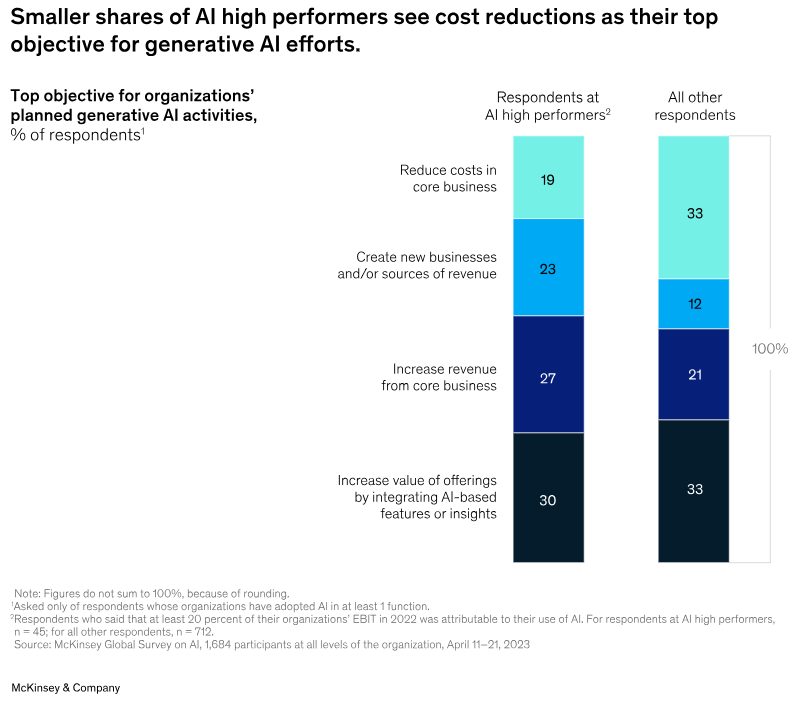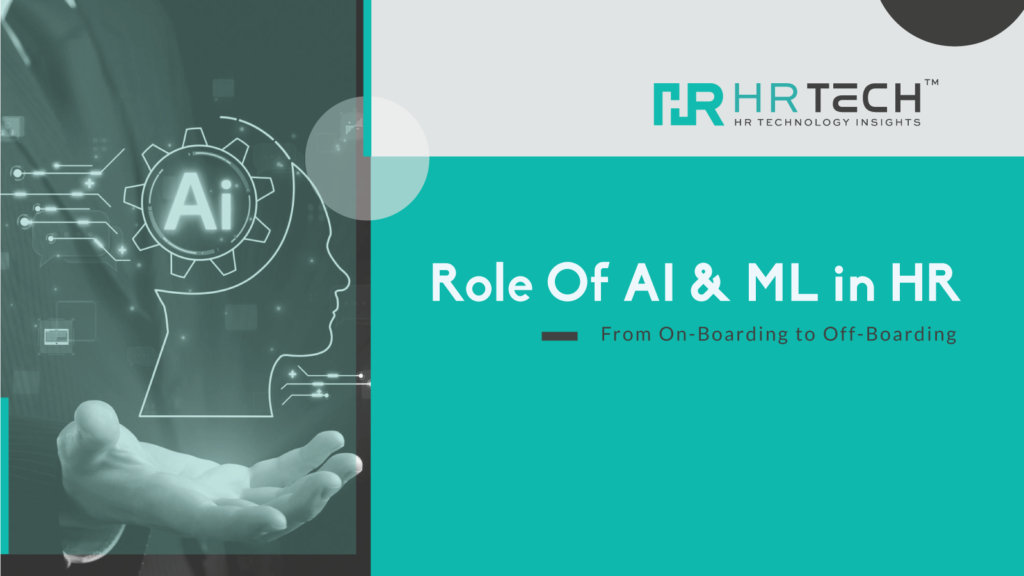Introduction
AI and ML are rapidly transforming and taking over most of the industries and HR tech is not exceptional when it comes to the on-boarding and off-boarding processes. From recruitment to off-boarding processes, these technologies are changing how organizations interact with and manage their workforce. AI and ML contribute to automating tasks, big data analysis, and predictive insights that enhance efficiency, improve decision-making, and breed a more exciting work environment. This essay will focus on the multifaceted roles of AI and ML in HR, discussing impacts on various processes from on-boarding to off-boarding. Artificial intelligence and machine learning are constantly taking over various processes. As per PwC reports AI and ML will take over the robotic automation process, conversational intelligence, and every other operation in the foreseeable future.

Pros and Cons of AI and ML for HR
AI and ML both can be used to increase the HR leaders‘ support towards new employees and, smoothen the organizational procedures. Technological advancements such as AI and ML offer capabilities that are useful in automating mundane tasks, data analysis, and information prediction. Thus, these technologies enhance performance management, talent acquisition, and engagement in the workplace. On the other hand, while HR leaders contemplate the possible opportunities of using AI solutions to enhance their strategies on onboarding and recruitment, it would be very good for them to keep in mind the following: to achieve a possible increase in efficiency savings in terms of time and cost as well as providing more accurate data-based decisions.
Visit HR Tech Blog: Top 10 HR Challenges in Managing Employees Globally using HR Technology
However, there are also possible challenges that arise when implementing AI into HR. An example of such concerns might be data privacy and security and the fact that AI-generated answer keys could potentially supplant some forms of human judgment. Above all else, however, the success of AI-based solutions rests in the quality of data being used to train the algorithms. It follows that HR leaders must critically analyze the associated risk and reward with this adoption of AI technologies into the organization and subsequently utilize it in ways that are congruent with the organization’s values and objectives.
Artificial Intelligence (AI) and Machine Learning (ML) are revolutionizing the Human Resources (HR) landscape at such a blazing pace. Automation of routine tasks, valuable insights into employee behavior, and performance, and many more benefits abound. The influence of AI and ML brings to processes as simple as onboarding employees to as complex as offboarding them as well. AI and ML will ease the process for HR and will make them utilize their time in other tasks. The advanced technology helps HR in:
- Onboarding: AI and ML offer a seamless transition in the onboarding of fresh employees and have traditionally been time-consuming and very administrative. AI and ML can fasten the process and allow most processes to be more automatic and helpful. HRs used to face various challenges in the onboarding process previously, AI and ML helps them make a smooth onboarding.

Source: Deloitte - Personalized welcome messages: AI can send tailored welcome messages to new hires based on their interests and backgrounds. Vantage Circle and Keka are some of the most widely used tools.
- Digital paperwork: AI tools can assist HR and automate the collection and processing of necessary documents, including employment contracts, pay slips, and tax forms.

- Virtual onboarding: AI platforms can now offer virtual onboarding with access to training modules and remote connections to colleagues. AI can also scan data about the onboarding process to identify some weak spots. For example, it can track time-to-productivity measures, which informs HR of inefficiencies and makes the onboarding experience more efficient.

- Performance Management: Engaging employees and enhancing productivity are among the top challenges for HR. However, AI and ML can take performance management to a whole new level as it can provide:
>AI-based solutions can enable real-time feedback where employees continuously receive performance updates.
>AI analyzes data from any source, including time, email, and project completion, to give objective performance reports to employees.
>AI can easily analyze employee data, which will help identify strengths and weaknesses and create personalized development plans to support growing employees. Moreover, AI will detect issues when they occur, such as unengaged employees or burnout workers, so HR can take initiative on these issues.
Visit HR Tech Blog: Workday Signs Definitive Agreement to Acquire Evisort
- Talent Acquisition: Helps you find the right candidate at a faster pace. AI and ML are predicted to enhance the talent acquisition process through heavily:
- Automated Candidate Screening: AI tools allow candidate screening, making the process much quicker when analyzing resumes and applications. They will highlight candidates who meet the job requirements.
- Predictive analytics: AI can analyze past performance and behavioral data to predict the success of candidates in a particular role.
- Personalized candidate experiences: AI will provide a more personalized candidate experience by tailoring communication and interactions based on their individual preferences.

AI and ML will help HR teams recruit talent by automating routine tasks and providing data-driven insights, allowing them to search for the right talent more efficiently and effectively.
AI and ML can significantly enhance offboarding by automating tasks, providing personalized experiences, and offering valuable insights. These technologies can streamline exit interviews, facilitate knowledge transfer, ensure compliance with regulations, and improve the overall employee experience. By leveraging AI and ML, HR departments can gain a deeper understanding of employee satisfaction, identify areas for improvement, and optimize their offboarding strategies for a more efficient and effective transition. AI and ML can also be very useful in the process of offboarding.
AI and ML can be very useful in ensuring a smooth exit for employees. By utilizing artificial intelligence, HRs may experience a smooth transition in the following:
- Automated exit interviews: AI tools can help run exit interviews and fasten the gathering of valuable feedback on the employee’s experience.
- Knowledge transfer: AI and ML can facilitate knowledge transfer by identifying the most important skills and information to be preserved.
- Compliance management: AI ensures compliance with all the applicable regulations and policies during offboarding.
With task automation and, most importantly, data-driven insights, AI and ML can assist HR teams in streamlining the offboarding process and minimizing disruptions in organizations.
Visit HR Tech Blog: 7 Best AI-powered Employee Listening Features for HR Teams
How will AI and ML Change The On-boarding and off-boarding process?
AI and ML are game changers in terms of how HR departments work and offer great benefits, from increased efficiency to increased employee engagement. With automated tasks, data-driven insights, and personal experiences, AI and ML can actually guide the HR team in creating a better working environment full of productivity, efficiency, and engagement. It will be important for HR professionals to embrace these new technologies for them to evolve and find all the great opportunities associated with them.
To share your insights, please write to us at news@intentamplify.com



